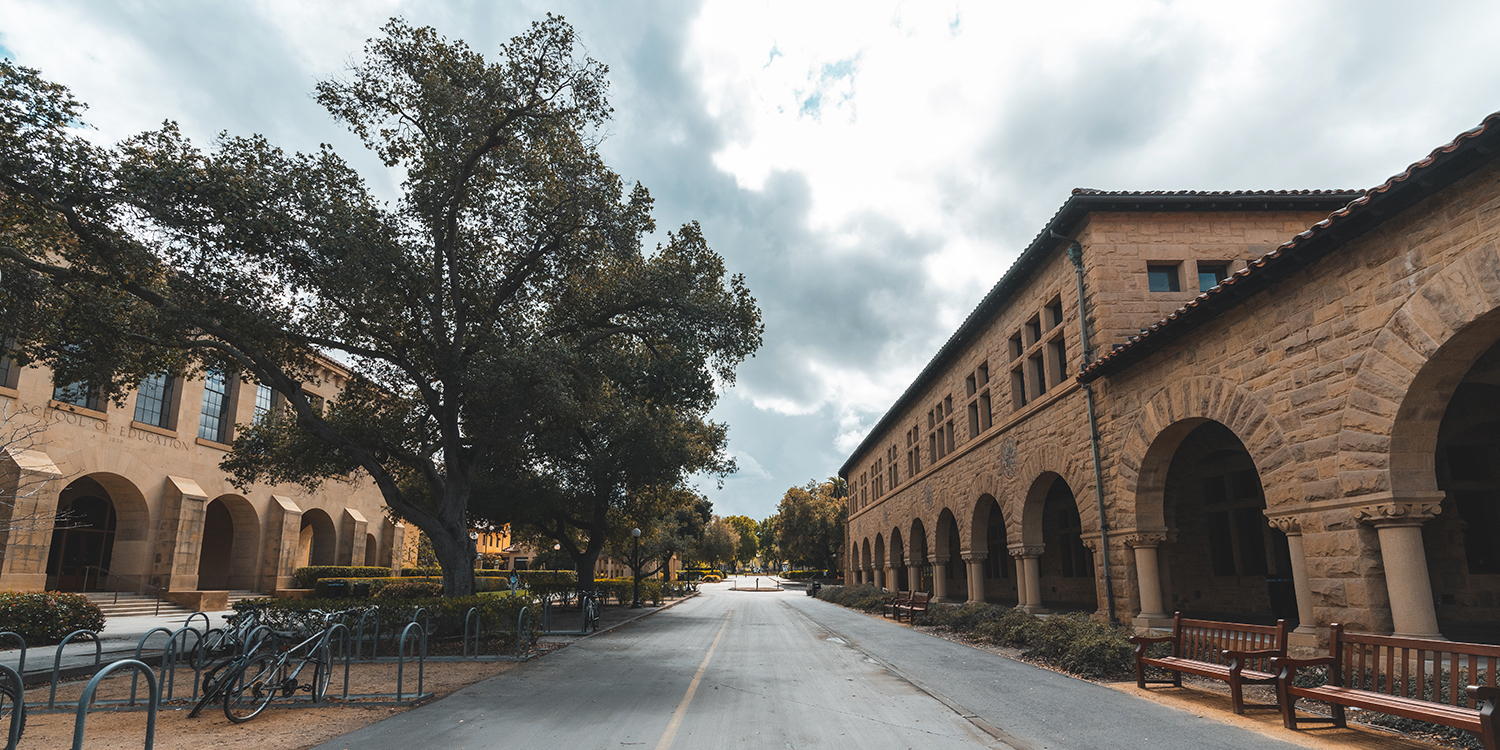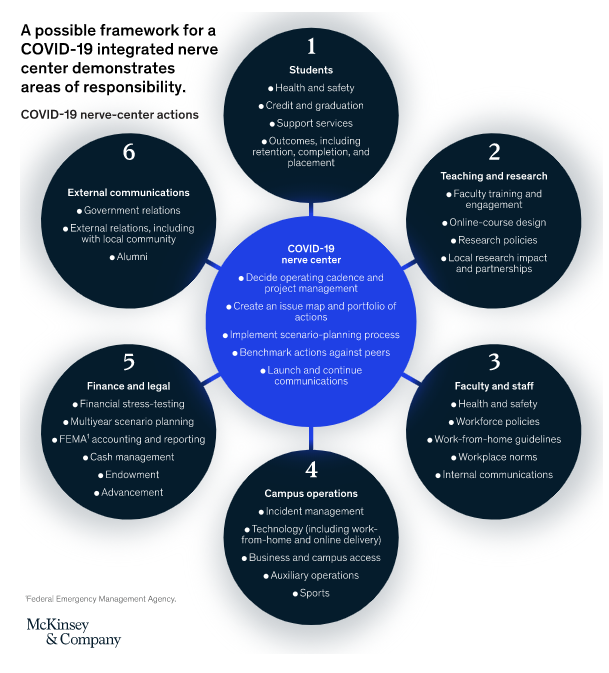Schedule a Course Match demo.
An expert will be in touch.

By Curtis / May 18, 2020
7 min read
These are unprecedented times. Students have been sent home, classes and graduations have migrated online, and uncertainty about the future is at an all-time high.
We have been observing higher education for many years. As a node among a number of institutions, we wanted to share what we have seen from the pandemic thus far and what we believe is yet to come.
While most students have gone home and the school year is ending, universities and colleges need to look ahead to the Fall and brace themselves for a new reality. Enrollment is set to drop, meaning that revenues will decline and student satisfaction will become even more critical.
There are three overarching themes running through the coming challenges for higher education institutions. At their root lies persistent ambiguity around the duration of the crisis. Institutions need to react effectively in the short term, while also anticipating the second order effects of our new reality.
Campus leaders are finding that emerging problems cannot be addressed using an existing playbook and that new solutions are needed. Compounding this, the pace at which new problems are presenting themselves necessitates greater organizational agility and collaboration than ever before.
Declining revenue and a lack of physical touch-points will constrain institutions’ options as they look for ways to compensate for a declining student experience. A natural reaction may be to avoid funding ‘discretionary’ programs’, but a blunt reduction in spending is simply not an option. Failure to invest in the student experience spawns a negative feedback loop of declining enrollments, budget cuts, and reduced student satisfaction. This can then drive further enrollment declines, and the cycle repeats itself. Looking forward, we expect persistent tension between student experience and declining budgets.
University yield (which typically ranges from 30-60%) already poses a challenge for all but the most prestigious universities. Without clarity on whether physical classes can resume in the Fall, admissions experts are predicting dramatic drops in student yield. As a result, admissions offices are likely to over-admit and create additional ambiguity around the number of active students in the Fall.
What this means is that last year’s enrollment is no longer a reliable datapoint when building schedules and determining how much to spend on educational capacity. Further, future shifts towards hybrid models4 (e.g., partial distance learning) will require constant adaptation to ensure campuses are run efficiently.
For the three challenges articulated above, we can learn from leading institutions in evaluating how to best respond.
Higher education institutions get an unfair reputation for the pace at which they make decisions. Behind the curtain, these are large and complex operations with the education of thousands of students at stake. With this in mind, it is hard to fault deliberate and thoughtful decision making during ‘normal times’.
COVID-19 is far from normal. In these times of crisis, institutions must act swiftly, proactively, and often without all the information needed to make a certain decision. To quote Voltaire, “the best is the enemy of the good”.
There are several models that propose a path to organizational agility in a crisis. McKinsey & Company, a leading strategic consultancy, suggests the development of an integrated nerve center.5 At the core of this methodology is the idea that a cross-functional team should be assembled to not only respond to current issues, but to proactively determine what challenges may present themselves in the future and begin to develop a set of solutions. Regardless of operating model, the shift towards proactive and ‘best available’ decision making will be an essential step in surviving this crisis.

The key to breaking any potential feedback loop lies in the concept of ROI. Interventions must be evaluated on their ability to improve student’s happiness for each dollar spent.
This can be an intuitive idea – sending every student a t-shirt obviously does a lot less than improving their educational experience, and can cost the same. However the opportunity here is that there are outsized drivers of returns on student satisfaction, and that campuses would do well to pay attention to them. Many of these are technological and can be deployed quickly.
Furthermore, surveys indicate students have become more receptive and appreciative of efforts to improve their experience given the current circumstance – stressing the importance of transparency and open communication around any efforts/investments. With stricter evaluation and stronger communication, institutions can show students how much they care.6
With enrollments potentially declining ~25% next fall, institutions are faced with the question of how to schedule classes and determine spend on instructional capacity. Historically, registrars and deans would be able to look at the prior year’s data and make intelligent adjustments based on additional admittance, changes to the curriculum, etc. This year has no precedent – enrollment is declining, yield is uncertain, and typical scheduling constraints (timing, travel time between campuses) have been lifted due to distance learning.
The consequences of incorrectly budgeting are dire. With instruction constituting 25-35% of an average institution’s spend per student,7 the cost of over-budgeting educational capacity is substantial. On the other side of the coin, under-allocating hinders an already jeopardized student experience.
This is a problem that we deeply understand at Cognomos.
At its core, the challenge is that campus leaders cannot understand student course demand until students enroll and communicate what they want.
With a traditional course selection process, schedules are generated and then students slot themselves into the different sections – leaving registrars crossing their fingers and hoping they properly estimated demand. The solution is to build a dynamic process. With the Course Match algorithm that we developed over years of academic research and real-world testing, students submit their preferences rather than signing up for specific class seats. This lets registrars run an allocation that optimizes for both student experience and operational efficiency.
An example of what this can do comes from a deployment at the Rotman School of Management at the University of Toronto, where, well-before a pandemic was even conceivable, they were able to reduce the number of sets offered by 10% in single registration period.
We have seen incredible collaboration within higher education during these times, with 55% of IT leaders openly sharing information with peers at other institutions. It is more important now than ever before to put our heads together, and we would love to keep the conversation going.
We will be writing next week about how institutions can lean into the coming changes and emerge stronger than before. Today’s system of education is a consequence of challenges during the First Industrial Revolution, and we can expect a new and improved educational models in the wake of COVID-19.
If you’re interested in speaking further about any of these topics or learning more about the problems we’re solving at Course Match, please feel free to reach out at hello@cognomos.com.
An expert will be in touch.